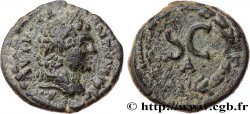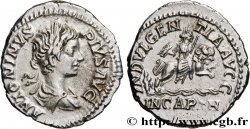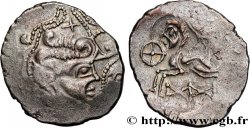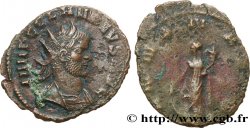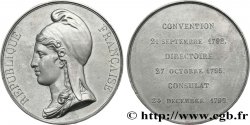Back 1/1
bpv_173735 - CARACALLA Tétradrachme syro-phénicien
Not available.
Item sold on our e-shop (2014)
Price : 1 200.00 €
Item sold on our e-shop (2014)
Price : 1 200.00 €
Type : Tétradrachme syro-phénicien
Date: 207-208
Mint name / Town : Laodicée, Syrie, Séleucie et Piérie
Metal : billon
Diameter : 26 mm
Orientation dies : 11 h.
Weight : 13,32 g.
Rarity : R3
Coments on the condition:
Minime usure sur la mèche à côté de l’oreille et sur le ventre de l’aigle, traces de nettoyage
Catalogue references :
Obverse
Obverse description : Buste lauré, drapé et cuirassé de Caracalla à droite, vu de trois-quarts en arrière, l’un des deux rubans de la couronne laurée descendant sur l’épaule (A*2).
Obverse legend : AUT KAI..AN...TWNEINOS .S. (Autokrator Kaisar Antwneinos Sebastos)
Obverse translation : (L’empereur césar Antonin auguste).
Reverse
Reverse description : Aigle debout à droite, les ailes déployées, la tête et la queue tournées à gauche, couronne feuillée dans le bec ; entre les pattes de l'aigle, sur une ligne de terre, une étoile à huit rais.
Reverse legend : DHMARC. EX. UPATOS. B. (Dhmarcikhs Exousias Upatos to B)
Reverse translation : (Puissance tribunitienne, consul pour la deuxième fois).
Commentary
Ce type manque au Prieur et vient s’intercaler entre les Prieur 1143 et 1144 : c’est le buste le plus complet pour le deuxième consulat et le 1144 est déjà du troisième consulat. Il reste à découvrir un buste cuirassé, dont nous connaissons la version pour Septime Sévère. La référence 1143B a donc été créée (La 1143A est identique mais l’épaule ronde indique un buste seulement drapé).
Les frappes du deuxième groupe de Laodicée se reconnaissent à quatre caractéristiques :
- le style est bon et l’aigle a une couronne
- la légende de revers ne redouble pas le TO
- la couronne dans le bec de l’aigle a des feuilles bien détachées
- les ailes de l’aigle sont approximativement à la même hauteur.
Si les pièces de ce groupe sont encore assez rares, il y a néanmoins une véritable frappe à motif économique.
L’identification de l’atelier est certaine grâce aux émissions de présentation qui montrent la Tyché de la ville assise sur un mont, un dieu-fleuve tenant le phare de la ville et nageant à ses pieds.
On note que les sigma sont gravés en C.
Dans la base TSP maintenue par Michel Prieur, deux exemplaires sont maintenant répertoriés, celui-ci et l’exemplaire de la vente Monnaies et Médailles 86, du 3 juin 1998, n°99. Ces deux exemplaires partagent le même coin de droit mais pas le même coin de revers. Notre exemplaire est le 1143A_002.
This type is missing from the Prior and is inserted between Priors 1143 and 1144: it is the most complete bust for the second consulate and 1144 is already from the third consulate. There remains to be discovered an armored bust, of which we know the version for Septimius Severus. Reference 1143B was therefore created (1143A is identical but the rounded shoulder indicates a bust that is only draped).
The strikes of the second group of Laodicea are recognizable by four characteristics: - the style is good and the eagle has a crown - the reverse legend does not duplicate the TO - the crown in the eagle's beak has well-detached leaves - the eagle's wings are approximately at the same height.
Although the coins in this group are still quite rare, there is nevertheless a real economic motive for striking.
The identification of the workshop is certain thanks to the presentation emissions which show the city's Tyche seated on a hill, a river god holding the city's lighthouse and swimming at her feet..
Note that the sigmas are engraved in C.
In the TSP database maintained by Michel Prieur, two examples are now listed, this one and the example from the Coins and Medals sale 86, of June 3, 1998, no. 99. These two examples share the same obverse corner but not the same reverse die. Our example is 1143A_002
Les frappes du deuxième groupe de Laodicée se reconnaissent à quatre caractéristiques :
- le style est bon et l’aigle a une couronne
- la légende de revers ne redouble pas le TO
- la couronne dans le bec de l’aigle a des feuilles bien détachées
- les ailes de l’aigle sont approximativement à la même hauteur.
Si les pièces de ce groupe sont encore assez rares, il y a néanmoins une véritable frappe à motif économique.
L’identification de l’atelier est certaine grâce aux émissions de présentation qui montrent la Tyché de la ville assise sur un mont, un dieu-fleuve tenant le phare de la ville et nageant à ses pieds.
On note que les sigma sont gravés en C.
Dans la base TSP maintenue par Michel Prieur, deux exemplaires sont maintenant répertoriés, celui-ci et l’exemplaire de la vente Monnaies et Médailles 86, du 3 juin 1998, n°99. Ces deux exemplaires partagent le même coin de droit mais pas le même coin de revers. Notre exemplaire est le 1143A_002.
This type is missing from the Prior and is inserted between Priors 1143 and 1144: it is the most complete bust for the second consulate and 1144 is already from the third consulate. There remains to be discovered an armored bust, of which we know the version for Septimius Severus. Reference 1143B was therefore created (1143A is identical but the rounded shoulder indicates a bust that is only draped).
The strikes of the second group of Laodicea are recognizable by four characteristics: - the style is good and the eagle has a crown - the reverse legend does not duplicate the TO - the crown in the eagle's beak has well-detached leaves - the eagle's wings are approximately at the same height.
Although the coins in this group are still quite rare, there is nevertheless a real economic motive for striking.
The identification of the workshop is certain thanks to the presentation emissions which show the city's Tyche seated on a hill, a river god holding the city's lighthouse and swimming at her feet..
Note that the sigmas are engraved in C.
In the TSP database maintained by Michel Prieur, two examples are now listed, this one and the example from the Coins and Medals sale 86, of June 3, 1998, no. 99. These two examples share the same obverse corner but not the same reverse die. Our example is 1143A_002







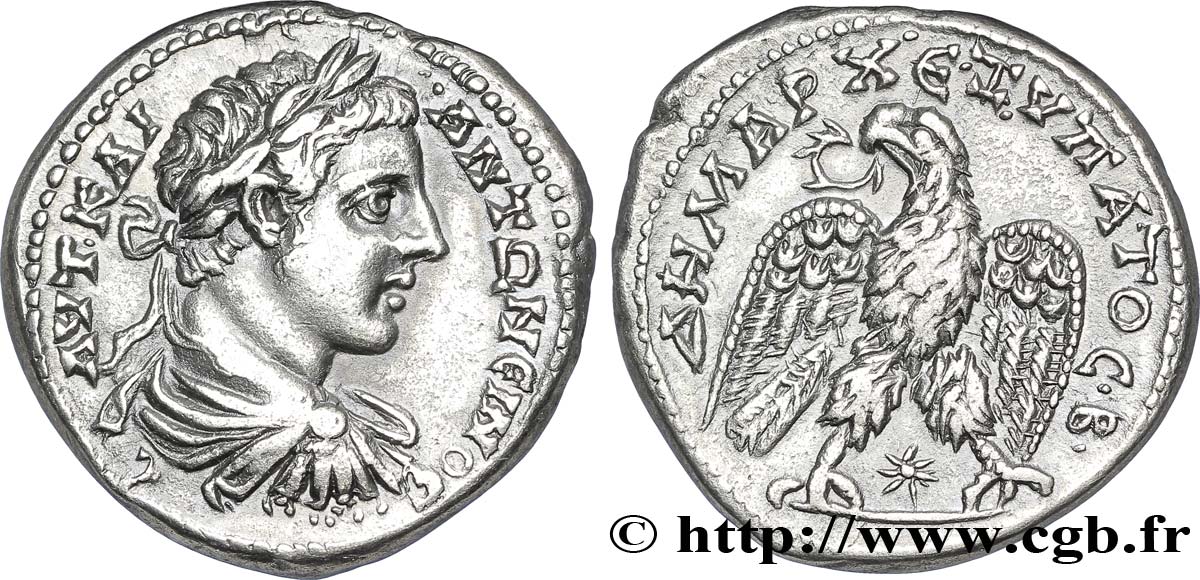
 Report a mistake
Report a mistake Print the page
Print the page Share my selection
Share my selection Ask a question
Ask a question Consign / sell
Consign / sell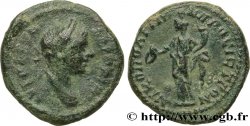
 Full data
Full data

